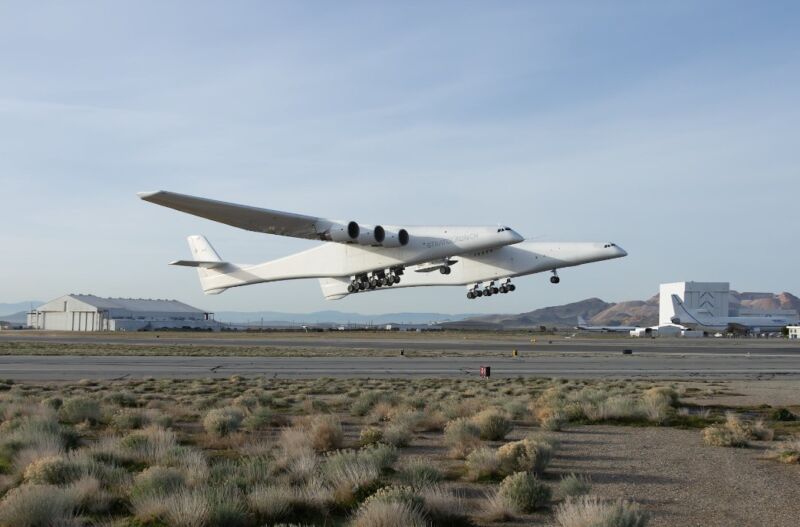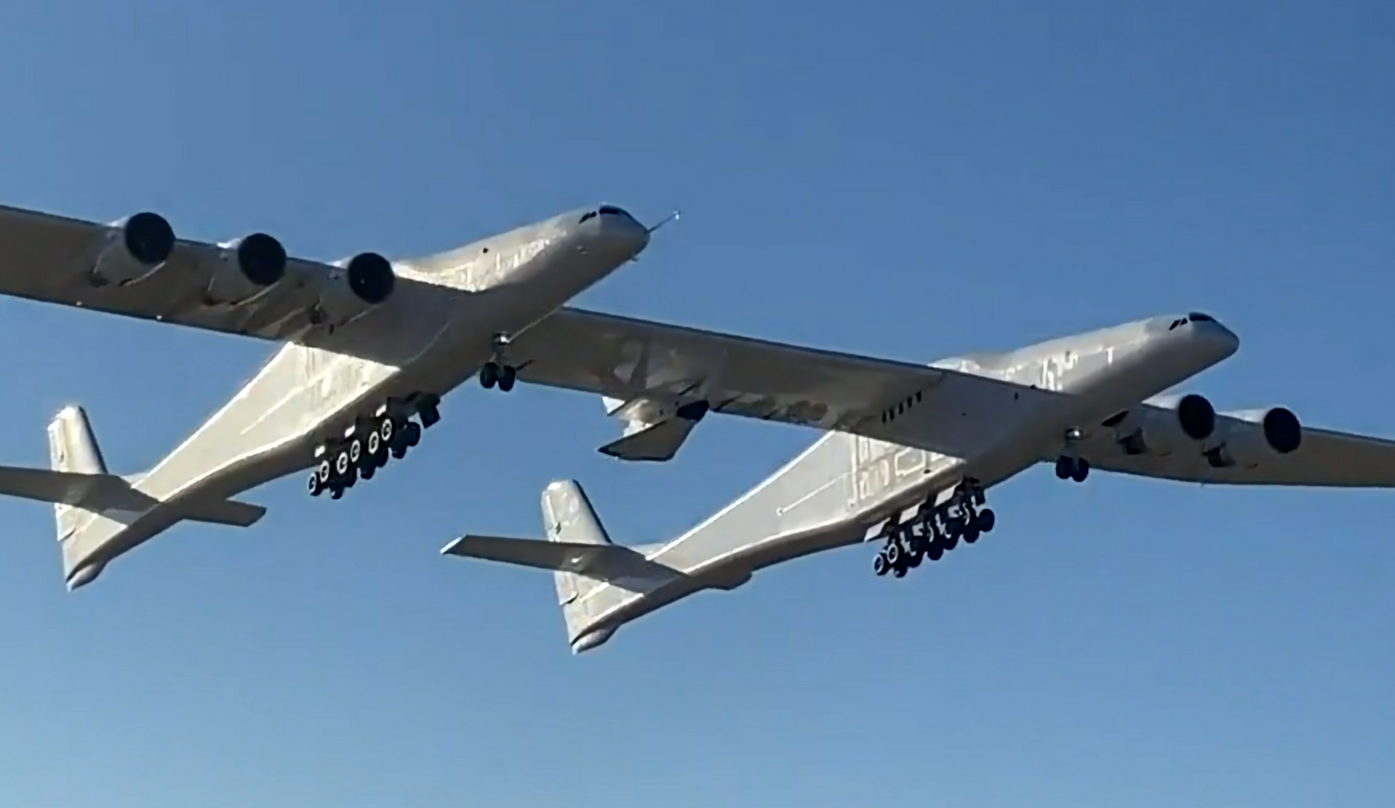
Built and flown by Stratolaunch, the massive Roc aircraft took off from Mojave Air and Space Port in California on Saturday. The airplane flew out over the Pacific Ocean, where it deployed the Talon-A vehicle, which looks something like a mini space shuttle.
This marked the first time this gargantuan airplane released an honest-to-goodness payload, the first Talon-A vehicle, TA-1, which is intended to fly at hypersonic speed. During the flight, TA-1 didn't quite reach hypersonic velocity, which begins at Mach 5, or five times greater than the speed of sound.
"While I can’t share the specific altitude and speed TA-1 reached due to proprietary agreements with our customers, we are pleased to share that in addition to meeting all primary and customer objectives of the flight, we reached high supersonic speeds approaching Mach 5 and collected a great amount of data at an incredible value to our customers," said Zachary Krevor, chief executive of Stratolaunch, in a statement.
In essence, the TA-1 vehicle is a pathfinder for subsequent versions of the vehicle that will be both reusable and capable of reaching hypersonic speeds. The flight of the company's next vehicle, TA-2, could come later this year, Krevor said.
A long road
It's been a long, strange road for Stratolaunch to reach this moment. The company was founded in 2011 to build a super-sized carrier aircraft, from which rockets would be launched mid-air. It was bankrolled by Microsoft cofounder and airplane enthusiast Paul Allen, who put at least hundreds of millions of dollars into the private project.
As the design of the vehicle evolved, its wingspan grew to 117 meters, nearly double the size of a Boeing 747 aircraft. It far exceeded the wingspan of the Spruce Goose, built by Howard Hughes in the 1940s, which had a wingspan of 97.5 meters. The Roc aircraft was so large that it seemed impractical to fly on a regular basis.
At the same time, the company was struggling to identify a rocket that could be deployed from the aircraft. At various times, Stratolaunch worked with SpaceX and Orbital ATK to develop a launch vehicle. But both of those partnerships fell through, and eventually, the company said it would develop its own line of rockets.
Allen would never see his large plane fly, dying of septic shock in October 2018 due to his non-Hodgkin lymphoma. Roc did finally take flight for the first time in April 2019, but it seemed like a pyrrhic victory. Following the death of Allen, for whom Stratolaunch was a passion project, the company's financial future was in doubt. Later in 2019, Allen's family put the company's assets up for sale and said it would cease to exist.
However, Stratolaunch did not die. Rather, the aircraft was acquired by the private equity firm Cerberus, and in 2020, the revitalized Stratolaunch changed course. Instead of orbital rockets, it would now launch hypersonic vehicles to test the technology—a priority for the US military. China, Russia, and the United States are all racing to develop hypersonic missiles, as well as new countermeasure technology as high-speed missiles threaten to penetrate most existing defenses.
Featuring a new engine
This weekend's flight also marked an important moment for another US aerospace company, Ursa Major Technologies. The TA-1 vehicle was powered by the Hadley rocket engine designed and built by Ursa Major, which specializes in the development of rocket propulsion engines.
Hadley is a 5,000-pound-thrust liquid oxygen and kerosene, oxygen-rich staged combustion cycle rocket engine for small vehicles. Its known customers include Stratolaunch and a vertical launch company, Phantom Space, which is developing a small orbital rocket.
Founded in 2015, Ursa Major seeks to provide off-the-shelf propulsion solutions to launch customers. While Ursa Major started small, the company is already well into the development of its much larger Ripley engine. With 50,000 pounds of thrust, Ripley is aimed at the medium-launch market. The company completed a hot-fire test campaign of Ripley last year. For Ursa Major, it must feel pretty good to finally see an engine in flight.



3175x175(CURRENT).thumb.jpg.b05acc060982b36f5891ba728e6d953c.jpg)
Recommended Comments
There are no comments to display.
Join the conversation
You can post now and register later. If you have an account, sign in now to post with your account.
Note: Your post will require moderator approval before it will be visible.